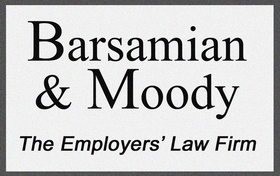Another Heat Wave for Agricultural Employers, Make Sure to SWEAT

In light of July 2024 being the second hottest month on record (ever), it is appropriate to reemphasize the importance of strict compliance with Cal/OSHA’s heat illness prevention standard (8 C.C.R. § 3395). Toward this end, we wanted to share a helpful acronym that you can utilize during your next supervisor training or even a tailgate meeting with workers. By now, most agricultural employers are familiar with Cal/OSHA’s “water, rest, shade” mantra. While those three words are helpful for remembering the heat illness prevention standard, our favorite acronym is SWEAT:
Shade: When the outdoor temperature in the work area exceeds 80 degrees Fahrenheit, employers are required by law to maintain one or more areas with shade that are either open to the air or provided with ventilation or cooling. Employees must be allowed and encouraged to take preventative cool-down rest in the shade when overheated. Also, an employee who takes a preventative cool-down rest shall be monitored, encouraged to remain in shade, and not ordered back to work until symptoms are abated and no less than five minutes in addition to time needed to access the shade.
Water: Employers shall provide employees access to potable drinking water that is fresh, pure, suitably cool, and provided to employees free of charge. Water shall be located “as close as practicable” to the areas where employees are working. While “as close as practicable” can be a difficult standard to apply, it generally means that water should be located no more than 200 feet away from the workers. The employees must be encouraged to frequently consume small quantities of water, up to 4 cups per hour (i.e., 32 ounces per hour, which is eight 4-ounce paper cone cups), when the work environment is hot and employees are likely to sweat more.
Emergency procedures: Emergency procedures require employers to ensure there are procedures for: (1) effective communication between employees and supervisor or emergency medical services, (2) respond if there are symptoms or signs of heat illness, (3) how to contact emergency medical services if necessary, and (4) ensuring there is a clear and precise direction to the work site for emergency responders to provide aid in the event of an emergency.
Acclimatization: Employers must assign a supervisor or designee to closely observe all employees during a “heat wave” for heat related symptoms. In this context, a “heat wave” means any day in which the predicted high temperature for the day will be at least 80 degrees Fahrenheit and at least ten degrees Fahrenheit higher than the average high daily temperature in the preceding five days. Additionally, a supervisor or their designee must closely observe a newly assigned
employee for the first 14 days of the employee’s employment when assigned to a high heat area.
Training: Employers must provide effective training and procedures to comply with the requirements. Such as, importance of frequency of consumption of water, know the different types of heat illness, and signs and symptoms of heat illness.
Your supervisors should be well-versed on section 3395. In the event of a heat illness related inspection, Cal/OSHA’s inspectors will want to be assured that your supervisors have a thorough understanding of section 3395. That said, we realize it can be difficult for supervisors to remember the different nuances of the standard—particularly, when put on the spot during a Cal/OSHA inspection. The SWEAT acronym should provide a helpful framework for talking about the standard on the fly.
Lastly, we will leave you with a quick note about enforcement because it is worth noting that section 3395 violations are frequently cited as Serious violations, which carry base fines of $18,000 per violation. Moreover, in addition to heat illness prevention being a central focus for Cal/OSHA, there are numerous outside groups such as the UFW, North Bay Jobs for Justice, etc., that have long used heat illness cases as the “reason” or “need” for increased regulations of outdoor workplaces.
The attorneys at Barsamian & Moody are available to address any concerns regarding how to comply with Cal/OSHA Heat Illness Preventions standards.
The goal of this article is to provide employers with current labor and employment law information. The contents should neither be interpreted as, nor construed as legal advice or opinion. The reader should consult with Barsamian & Moody at (559) 248-2360 for individual responses to questions or concerns regarding any given situation.

